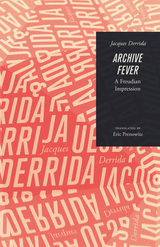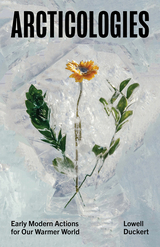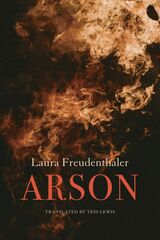6 books about Cock-Starkey, Claire
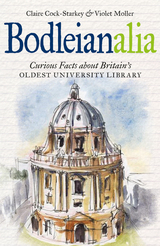
Bodleianalia
Curious Facts about Britain's Oldest University Library
Claire Cock-Starkey and Violet Moller
Bodleian Library Publishing, 2016
Which is the smallest book in the Bodleian Library? How many miles of shelving are there in its Book Storage Facility? What is fasciculing? Who complained when their secret pen name was revealed in the library’s catalog? Why did the library refuse to lend a book to King Charles I? The answers to these questions are just a few of the remarkable bits of bibliophile trivia uncovered by Claire Cock-Starkey and Violet Moller in this intriguing collection of curious facts about one of Britain’s oldest university library.
With more than twelve million items and many priceless treasures, including the Gutenberg Bible, Shakespeare’s First Folio, five thirteenth-century copies of Magna Carta, and Tolkien’s original watercolors for The Hobbit, the Bodleian also boasts many strange events and eccentric characters through the ages that contributed to its world-class renown today. From deep within the archives, Cock-Starkey and Moller have compiled a great many lesser-known facts about the Bodleian Library’s fascinating history, organizing them into easily browsable lists, factoids, and statistics.
With more than twelve million items and many priceless treasures, including the Gutenberg Bible, Shakespeare’s First Folio, five thirteenth-century copies of Magna Carta, and Tolkien’s original watercolors for The Hobbit, the Bodleian also boasts many strange events and eccentric characters through the ages that contributed to its world-class renown today. From deep within the archives, Cock-Starkey and Moller have compiled a great many lesser-known facts about the Bodleian Library’s fascinating history, organizing them into easily browsable lists, factoids, and statistics.
[more]
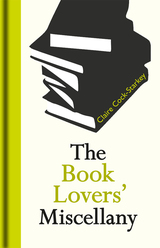
The Book Lovers' Miscellany
Claire Cock-Starkey
Bodleian Library Publishing, 2017
How is ink made? What is the bestselling book of all time? What are the oldest known books in the world? And how does one make sense of the colors found on Penguin paperbacks? The answers to these questions and many more await readers in The Book Lovers’ Miscellany.
The Book Lovers’ Miscellany is a cornucopia for bibliophiles. With customary wisdom and wit, Claire Cock-Starkey presents a brief illustrated history of paper, binding, printing, and dust jackets, with a wealth of arcane facts that even the most avid book lovers may be hard-pressed to answer: Which natural pigments were used to decorate medieval bibles? Which animal is needed for the making of vellum? Curious facts are drawn from throughout the history of books and publishing, including many more recent examples, such as a short history of the comic and the story behind the massively successful Harlequin romance imprint Mills and Boon. Readers can explore the output of the most prolific writers and marvel at the youth of the youngest published authors—or lament the decisions of the publishers who rejected books that later became colossal bestsellers. The book also includes a collection of lists, including unfinished novels, books that have faced bans, books printed with mistakes, the most influential academic books of all time, and the longest established literary families.
The perfect gift for every bibliophile, The Book Lovers’ Miscellany is equally well suited to reading straight through or dipping into here and there.
The Book Lovers’ Miscellany is a cornucopia for bibliophiles. With customary wisdom and wit, Claire Cock-Starkey presents a brief illustrated history of paper, binding, printing, and dust jackets, with a wealth of arcane facts that even the most avid book lovers may be hard-pressed to answer: Which natural pigments were used to decorate medieval bibles? Which animal is needed for the making of vellum? Curious facts are drawn from throughout the history of books and publishing, including many more recent examples, such as a short history of the comic and the story behind the massively successful Harlequin romance imprint Mills and Boon. Readers can explore the output of the most prolific writers and marvel at the youth of the youngest published authors—or lament the decisions of the publishers who rejected books that later became colossal bestsellers. The book also includes a collection of lists, including unfinished novels, books that have faced bans, books printed with mistakes, the most influential academic books of all time, and the longest established literary families.
The perfect gift for every bibliophile, The Book Lovers’ Miscellany is equally well suited to reading straight through or dipping into here and there.
[more]
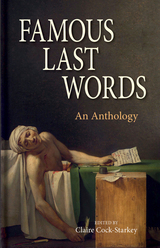
Famous Last Words
An Anthology
Edited by Claire Cock-Starkey
Bodleian Library Publishing, 2016
Which statesman was, by the end, “bored with it all?” Which world-renowned economist considered on his deathbed whether he ought to have been less abstemious, saying “I should have drunk more champagne.” Did Admiral Horatio Nelson, one of England’s greatest naval heroes, really utter “Kiss me, Hardy” to his captain just before his death in the Battle of Trafalgar?
Over the years, family and loved ones have recorded an extraordinary number of famous last words, from kings and queens to politicians, philosophers, scientists, writers, and actors. These exit lines can impart keen insights from an extraordinary life, reveal a sense of humor indomitable in even the darkest hours, or tell us something about a celebrated person’s last moments of life. Perhaps unavoidably given their provenance, many last words have proven irresistible to embellishment or remain in question. King Charles II, for example, was said to have instructed his brothers to “let not Poor Nelly starve,” asking that his favorite mistress be provided a pension of 1,500 pounds a year. Although she did indeed receive said pension, some contend that Charles’s actual last words, following a long period of illness, were, “You must pardon me, gentlemen, for being a most unconscionable time a-dying.”
For Famous Last Words, Claire Cock-Starkey has collected the most interesting, insightful, and controversial last words, from deathbed desperation to the fondest of farewells.
Over the years, family and loved ones have recorded an extraordinary number of famous last words, from kings and queens to politicians, philosophers, scientists, writers, and actors. These exit lines can impart keen insights from an extraordinary life, reveal a sense of humor indomitable in even the darkest hours, or tell us something about a celebrated person’s last moments of life. Perhaps unavoidably given their provenance, many last words have proven irresistible to embellishment or remain in question. King Charles II, for example, was said to have instructed his brothers to “let not Poor Nelly starve,” asking that his favorite mistress be provided a pension of 1,500 pounds a year. Although she did indeed receive said pension, some contend that Charles’s actual last words, following a long period of illness, were, “You must pardon me, gentlemen, for being a most unconscionable time a-dying.”
For Famous Last Words, Claire Cock-Starkey has collected the most interesting, insightful, and controversial last words, from deathbed desperation to the fondest of farewells.
[more]
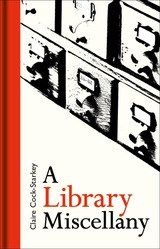
A Library Miscellany
Claire Cock-Starkey
Bodleian Library Publishing, 2018
What can be found in the Vatican’s Secret Archive? How many books did Charles Darwin’s library aboard the Beagle hold? Which library is home to a colony of bats?
Bursting with potted histories, quirky facts, and enlightening lists, this book explores every aspect of the library, celebrating these remarkable institutions as well as the individuals behind their inspiring collections. From the ancient library at Alexandria to the Library of Congress in Washington DC, and from university libraries to those of humble villages, A Library Miscellany explores institutions both old and new. Opening the door to unusual collections such as herbaria, art libraries, magic libraries, and even the “library of smells,” this book also charts the difficulties of cataloging books deemed to be subversive, heretical, libelous, or obscene.
Packed with unusual facts and statistics, this is the perfect gift for library enthusiasts, bibliophiles, collectors, and readers everywhere.
Bursting with potted histories, quirky facts, and enlightening lists, this book explores every aspect of the library, celebrating these remarkable institutions as well as the individuals behind their inspiring collections. From the ancient library at Alexandria to the Library of Congress in Washington DC, and from university libraries to those of humble villages, A Library Miscellany explores institutions both old and new. Opening the door to unusual collections such as herbaria, art libraries, magic libraries, and even the “library of smells,” this book also charts the difficulties of cataloging books deemed to be subversive, heretical, libelous, or obscene.
Packed with unusual facts and statistics, this is the perfect gift for library enthusiasts, bibliophiles, collectors, and readers everywhere.
[more]
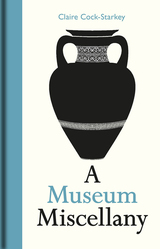
A Museum Miscellany
Claire Cock-Starkey
Bodleian Library Publishing, 2019
Which are the oldest museums in the world? What is a cabinet of curiosity? What is on the FBI’s list of stolen art?
A Museum Miscellany celebrates the intriguing world of galleries and museums, from national institutions such as the Louvre, the British Museum, and the Metropolitan Museum of Art to niche collections such as the Lawnmower Museum and the Museum of Barbed Wire. Here you will find a cornucopia of museum-related facts, statistics, and lists, covering everything from museum ghosts, dangerous museum objects, and conservation beetles to treasure troves, museum heists and the Museum of London’s fatberg.
Bursting with quirky facts, intriguing statistics, and legendary curators, this book is the perfect gift for museum aficionados and collectors alike.
A Museum Miscellany celebrates the intriguing world of galleries and museums, from national institutions such as the Louvre, the British Museum, and the Metropolitan Museum of Art to niche collections such as the Lawnmower Museum and the Museum of Barbed Wire. Here you will find a cornucopia of museum-related facts, statistics, and lists, covering everything from museum ghosts, dangerous museum objects, and conservation beetles to treasure troves, museum heists and the Museum of London’s fatberg.
Bursting with quirky facts, intriguing statistics, and legendary curators, this book is the perfect gift for museum aficionados and collectors alike.
[more]
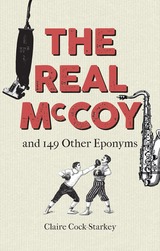
The Real McCoy
And 149 Other Eponyms
Claire Cock-Starkey
Bodleian Library Publishing, 2018
From diesel to gerrymandering, the English language is rich with eponyms—words that are named after an individual. The many histories behind these words are often mesmerizing—a word named, incidentally, after the German physician Franz Mesmer, who developed the practice of hypnotism as a form of therapy.
Deriving from numerous sources, eponyms are full of intrigue. This book features one hundred and fifty of the most interesting and enlightening specimens, delving into the origins of the words and describing the fascinating people after whom they were named. Some honor a style icon, inventor, or explorer, such as pompadour, Kalashnikov, and Cadillac. Others have roots in Greek or Roman mythology, such as panic and tantalize. Still others are far from celebratory and were created to brand the negative association of their origins—into this category can be filed boycott, Molotov cocktail, and sadist.
Encompassing words from medicine, botany, invention, science, fashion, food, and literature, this book uncovers the curious tales of discovery, mythology, innovation, and infamy behind the eponyms we use every day. The Real McCoy is the perfect addition to any wordsmith’s bookshelf.
Deriving from numerous sources, eponyms are full of intrigue. This book features one hundred and fifty of the most interesting and enlightening specimens, delving into the origins of the words and describing the fascinating people after whom they were named. Some honor a style icon, inventor, or explorer, such as pompadour, Kalashnikov, and Cadillac. Others have roots in Greek or Roman mythology, such as panic and tantalize. Still others are far from celebratory and were created to brand the negative association of their origins—into this category can be filed boycott, Molotov cocktail, and sadist.
Encompassing words from medicine, botany, invention, science, fashion, food, and literature, this book uncovers the curious tales of discovery, mythology, innovation, and infamy behind the eponyms we use every day. The Real McCoy is the perfect addition to any wordsmith’s bookshelf.
[more]
READERS
Browse our collection.
PUBLISHERS
See BiblioVault's publisher services.
STUDENT SERVICES
Files for college accessibility offices.
UChicago Accessibility Resources
home | accessibility | search | about | contact us
BiblioVault ® 2001 - 2025
The University of Chicago Press



